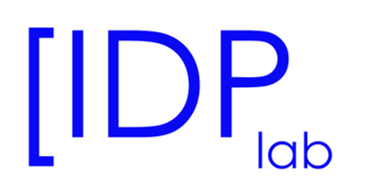From Project to Product Management
A company offering solutions for Embedded Software Systems handled every customer request as a project. One team has always been assigned to one specific customer group and did their best zu implement their requirements. Said mode of operation resultated in a decrease of profitability as well as in an increased workload for every team member as soon as customer and sales numbers went up. If an creasing number of customers have different requirements to the development, configuration and maintainance of solutions, they cannot be fulfilled in a profitable way. Likewise employee resources are wasted.
There was a need for a swirch from project to product orientation. This has been done by identifying the common value proposition across all projects. This lowest common denominator has then be defined. specified, developed and tested as the configurable product core of the company.
Along with the switch from a project to a product model the business model of the company changed as well as the job design of the different functions: The two main tasks of sales consisted then in, firstly, managing customer requirements towards the product core and, secondly, pooling customer requirements into a Product Roadmap. The key task of development was to configure, customize and test a common product core. The primary jobs of the service function was to identify and to resolve customer issues as configuration issues on the one hand and to feed the Product Roadmap with reiterating customer issues.
The switch yielded a change in the productivity of the company - measured by chargable customer services per day - from 12.000,- EUR to 18.000,- EUR without any capacity increase. This change required three one-day-workshops for the identification and definition of the product core as well as a product development project.
From Cerification to Process Management
A development department in Automotive industry was forced by a couple of customers to certify themselves according to a process-related quality standard. The certification was viewed by the customers as a preventive quality assurance measure for their suppliers, associated with the expectation that by complying with defined processes the reliability of the results with respect to quality, time and costs will improve.
Actually the certification project turned out to be a documentation project. In the audit the only assessment related to the question, if every major process step resulted in a documented "work product". If this had been verified the process was assessed as being followed. In the opposite case not. Hence the certification process created a parallel reality to the "normal work" in which only results have been assessed as being valid which produced a defined document. From the perspective of the developers the waste produced was to be seen in the fact that they suddenly got two different "jobs" (without capacity increase): to deliver customer solutions and to produce and mainatin documents.
The root cause for this kind of waste could be located in the level of detail of the process description which was created by external consultants. By interpreting the requirements of the standards in a very risk-averse way the organisation has prescribed itself a documentation level far above the required standard.
The solution for the issue consisted in a "debureaucratisation" of the process description in alignment with the auditors. This has been done to the limits of the requirements of the standard. The "bureaucracy index", defined as the number of used documents in relation to the number of created documents, changed from 0,2 to 0,8. This result involved a "debureaucratisation project" of two months duration in collaboration with two auditors.
From Inventory Management to Pastoral Work
A church organisation suffered since several years from a decreasing number of members. Along with diminishing number of members the personnel and financial resource base for maintaining the facilties (schools, boarding schools, educational institutions etc.) tapered off. The waste which emerged from this situation could be seen in the increasing individual workload for every single member which had more administrative than pastoral qualities. The mission of the organisation to accomplish pastoral work dissolved from the point of view of the members.
The only solution in order to transform this situation in a sustainable way was the disposal of a good portion of the tasks and institutions which consumed more and more resources. The challenge lied in the questions, what tasks and institutions should be terminated and in what way. For every member wanted to save "their work" for which they saw themselves as being responsible.
Since pastoral work is not primarily based on structures but on persons the approach was to ask every single member for their future perspectives for the next three to five years. Said perspectives have been implements into diffrent "maps" indicating scenarios of the organisation in five years with reduced inventory. Finally the map was jointly selected which promised the most effective pastoral work on the one hand and which yielded a preferred place for every member on the other hand.
By employing this approach the organisation was reduced from nine to four subsidiaries. This yields space for increased pastoral work. This result required a process of one year duration with four workshop days in total.
